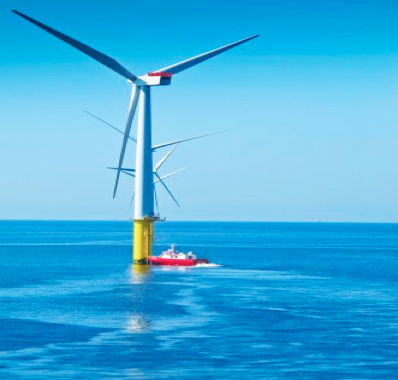ShippingLab has announced its support for a new project that will convert power from the Wind turbines at the Port of Hvide Sande to hydrogen for use in a fuel cell intended to power a vessel. The vessel powered by the fuel cell will be used to keep the Danish port entrance free of sand.
The companies involved in the project are Hvide Sande Shipyard, Ballard Power Systems, and Odense Maritime Technology, and are now investigating how present experience with hydrogen fuel cells can be applied onboard ships.
While many buses and trucks run on hydrogen now, the special conditions onboard a ship make very different requirements, said Kristina F Juelsgaard, Business Development Director at Ballard Power Systems Europe, a fuel cell specialist.
“There is a huge difference between running a bus on hydrogen through town and bringing the same power system onboard a vessel affected by waves and current. There is the weather and the effect of water and salt, and at the same time the system must be able to handle both the propulsion of the vessel and increased workload when the vessel is lying still dredging. We have developed a good solution for this, and the cooperation in ShippingLab with the maritime experts is absolutely crucial to having the solutions tested in real life and finding out what actually works best at sea. Not all types of green fuel will be suitable for all kinds of vessels, so we are looking forward to having a good, shared experience with hydrogen,” said Kristina F Juelsgaard.
Carl Erik Kristensen, CEO of Hvide Sande Shipyard is pleased that a local need for a larger, stronger and more modern dredger can form the basis for a possibly unprecedented green project. The overall common project is zero emission. It will be found out if hydrogen is the right thing to put our faith in, but there is a general agreement that it has a large potential.
“Hydrogen works very well in other connections, so if all goes well, it can also be used here. We are happy to be a part of this project because we as a shipyard want to be in the forefront of the development of new solutions, which can make shipping far more sustainable in the future. It will also please us very much if locally produced power can provide both sufficient hydrogen to the project and also send extra heat to district heating customers – and no matter what, we will learn a lot from the project,” Carl Erik Kristensen said.
In practice, the design of the new vessel will be based on a well-known design for a tug and supply vessel. But with hydrogen on board, it must also be considered how it can be stored and loaded safely as hydrogen is a flammable gas that must be handled safely. Solutions must be found to ensure ventilation, possible fire extinction, monitoring, etc.
Consequently, the approval process and risk assessment will be quite comprehensible, and the project will – in cooperation with authorities – contribute to determining the requirements for use of hydrogen on board ships. But the parties involved in the project believe that all this can be solved.
The real criterion for the success of the project is if it can be made commercially viable. But the parties are optimistic, and at Odense Maritime Technology, Chief Commercial Officer Thomas Eefsen believes there is a large business potential in the project.
“A part of it is the local perspective of converting the power from the wind turbines to be applicable in the local shipping. At the same time, we see a large potential in the use of hydrogen in terms of reducing the climate impact, especially from operations close to shore,” Eefsen said.
“Our interest in the project is to demonstrate and assess the potential of “green” hydrogen all the way from production, storage and bunkering and to application as fuel for propulsion. When we have, hopefully, succeeded in this, the use of hydrogen can be important in making the local shipping greener, and when shipping becomes more climate friendly, we hope to see a much larger amount of cargo transported on ships, thereby increasing the turnover in the shipping business. So there are many interesting aspects in this project,” Eefsen continued.
During the next two years, the business case will be developed, and the possibilities will be tested in practice, and Kjeld Dittmann, Chairman of ShippingLab, is happy that another interesting project has been added to the by now extensive cooperation in ShippingLab.
“Shipping is facing large challenges in terms of converting operation from traditional fuels to more environmentally friendly solutions, and for short sea shipping, fuel cells seem to be a promising alternative. At the same time, this particular project is interesting to ShippingLab because it could be possible to create a local ecosystem around the hydrogen which will provide important knowledge about problems and solutions in relation to production, distribution and application of hydrogen as a means of propulsion for short sea shipping,” Kjeld Dittmann said.
Apart from the contribution from ShippingLab, the project is now seeking further funding.
Source: https://vpoglobal.com/2020/06/12/from-gale-to-green-shipping/
